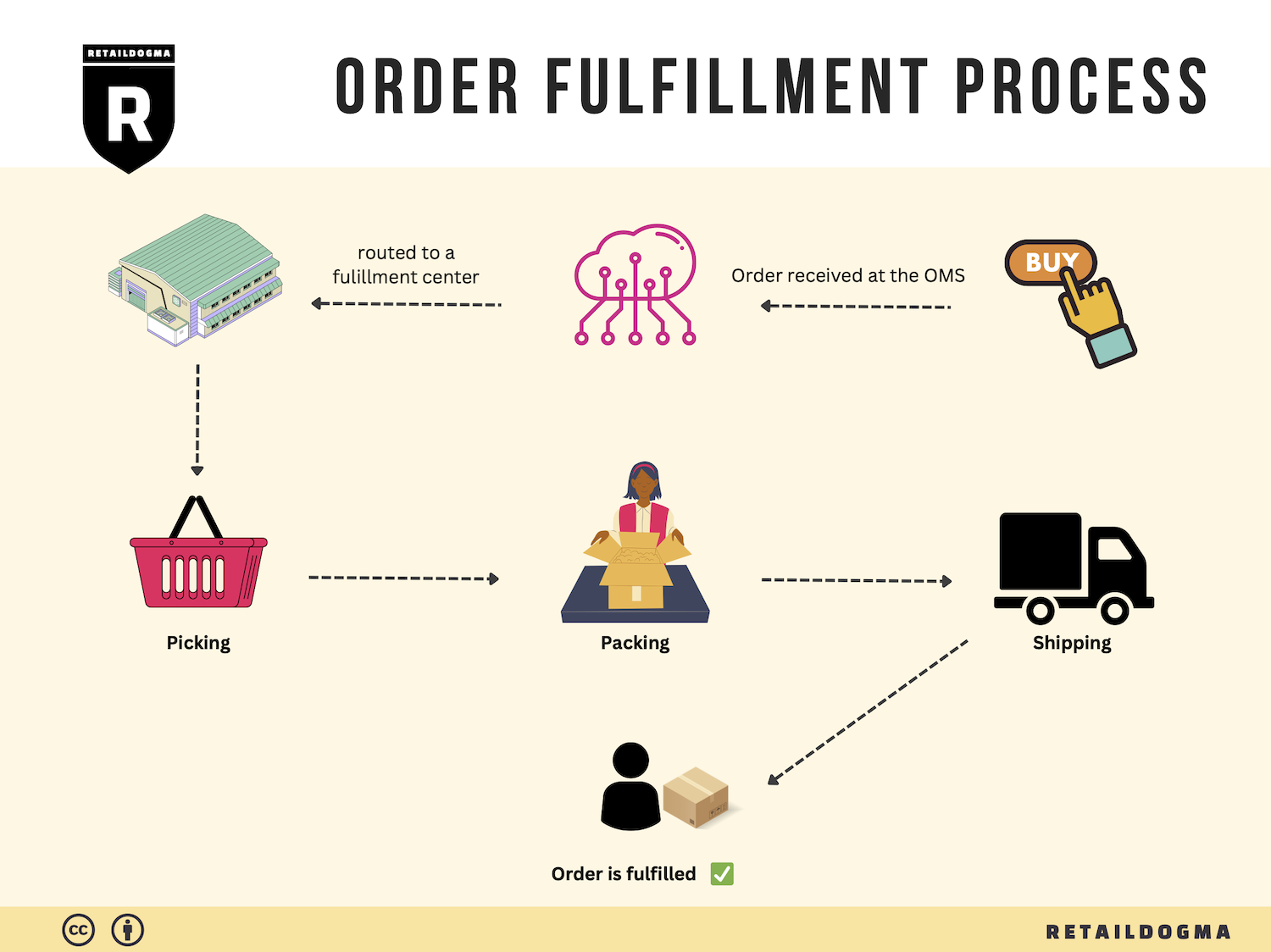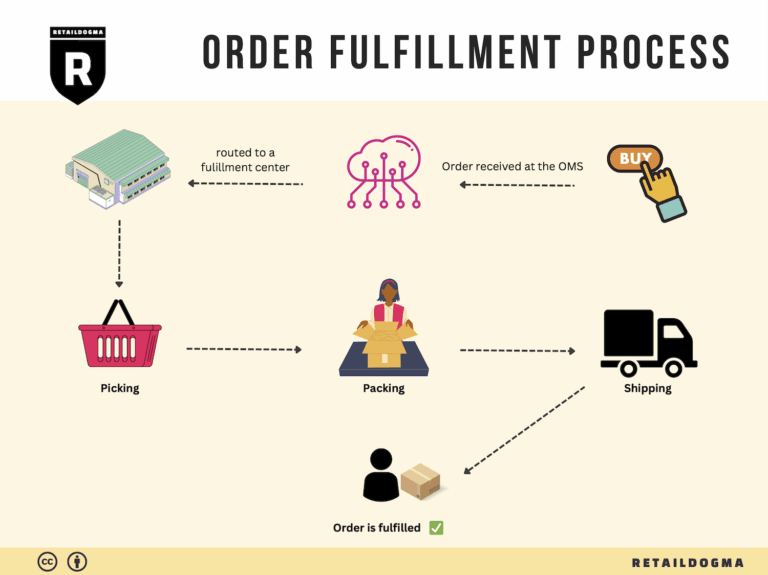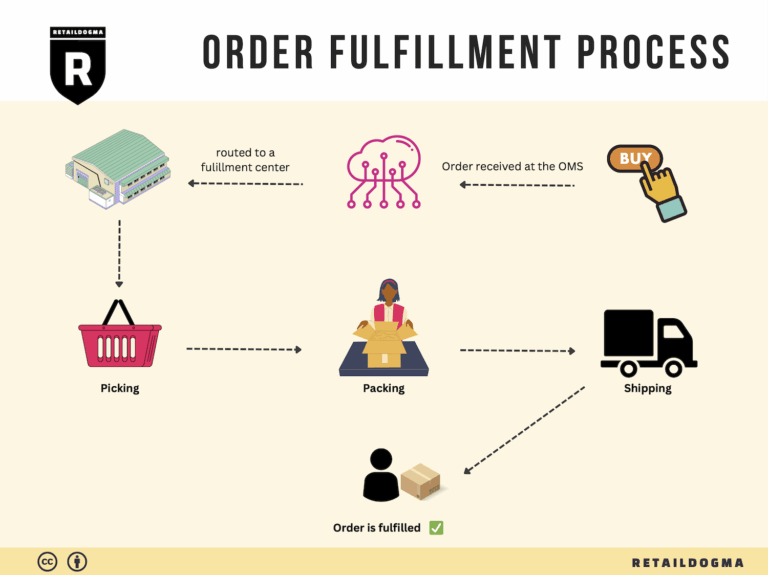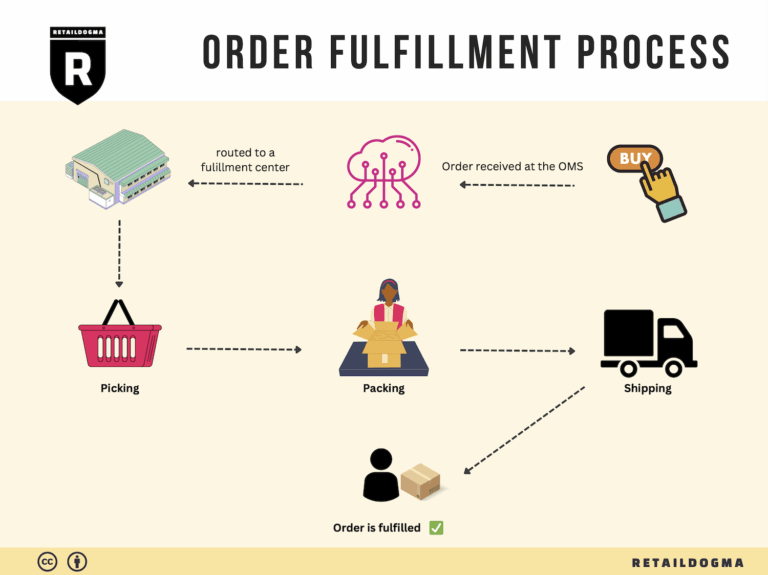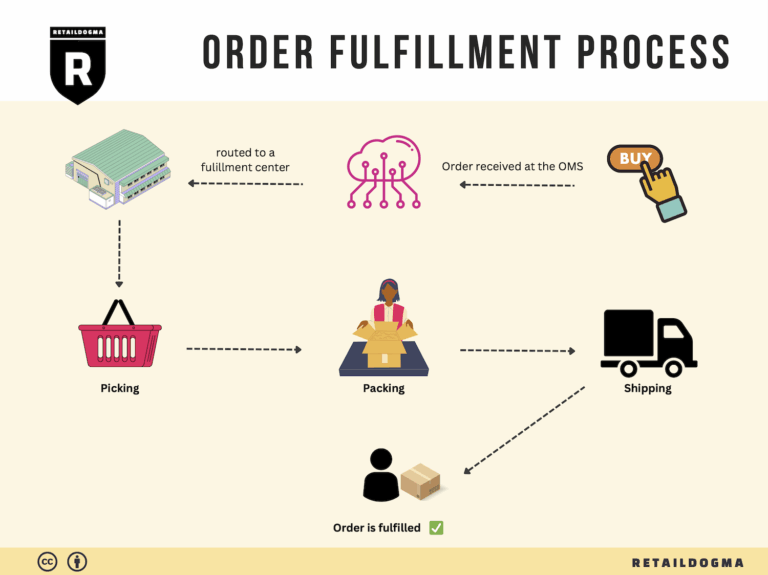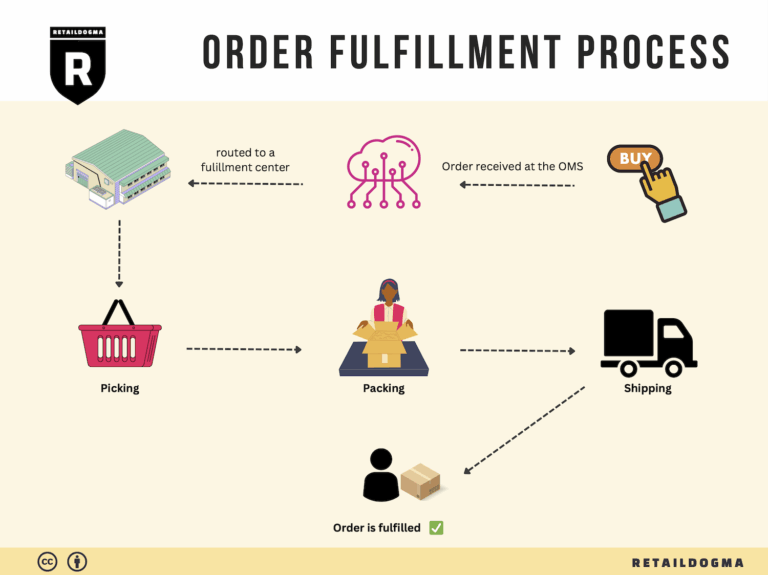What Is A Fulfillment Center? A Complete Guide (2025)
What is E-commerce Fulfillment? An Introduction for Growing Businesses
Understanding E-commerce Fulfillment: A Path to Streamlined Operations
As an e-commerce business owner, you may often find yourself grappling with the myriad tasks associated with packing and shipping orders. The excitement of growing your sales can quickly turn into a daunting challenge when you realize that managing logistics is not just an afterthought—it’s a critical component of your success. Fulfillment, at its core, is the process of getting a product into the hands of your customer. This involves not just shipping, but also warehousing, inventory management, and customer service.
For many growing businesses, the struggle lies in balancing the demands of fulfilling orders efficiently while also focusing on scaling their operations. This guide aims to demystify e-commerce fulfillment by providing insights into the various models available, such as Third-Party Logistics (3PL) and Fulfillment by Amazon (FBA). Each model comes with its unique advantages and challenges, and understanding these can help you choose the best fit for your business.
We’ll explore the core services that fulfillment partners offer, including inventory storage, order processing, packing, shipping, and returns management. By understanding these services, you can better assess your current capabilities and identify areas where you may need external support.
Choosing the right fulfillment partner is crucial. This guide will provide a framework for evaluating potential partners based on factors such as scalability, technology integration, and geographical reach. Understanding pricing models is equally important; we’ll break down common pricing structures and what you should expect, helping you to budget effectively and avoid hidden costs.
Ultimately, the goal of this guide is to empower you to make informed decisions about your logistics strategy. Whether you’re contemplating a shift to a fulfillment partner or looking to optimize your current processes, our insights will equip you with the knowledge to navigate the complexities of e-commerce fulfillment. With the right approach, you can transform fulfillment from a pain point into a strategic advantage, allowing you to focus on what you do best—growing your business.
What You’ll Learn In This Guide
- What is E-commerce Fulfillment? An Introduction for Growing Businesses
- The Order Fulfillment Process: From ‘Buy’ Button to Customer’s Door
- Comparing Fulfillment Models: In-House vs. 3PL vs. Dropshipping
- A Deep Dive into Amazon FBA: Pros, Cons, and Who It’s For
- Core Services Offered by Fulfillment Centers
- How to Choose a Fulfillment Partner: A 6-Point Checklist
- Understanding Fulfillment Pricing: A Breakdown of Common Fees
- Frequently Asked Questions (FAQs) about Fulfillment
- Conclusion: Is Outsourcing Fulfillment the Right Move for Your Business?
- Important Disclaimer
The Order Fulfillment Process: From ‘Buy’ Button to Customer’s Door
1. Receiving Inventory
The order fulfillment process begins with receiving inventory at the fulfillment center. This step involves the delivery of products from suppliers or manufacturers to the warehouse, where they are checked for quality and accuracy against purchase orders. Each item is assigned a unique identifier, typically a Stock Keeping Unit (SKU), which simplifies tracking and management throughout the fulfillment process.
This step is critical because it ensures that the inventory is accurate and ready for storage and subsequent order processing. Any discrepancies in received goods can lead to stockouts or delays in order fulfillment, negatively impacting customer satisfaction. Proper inventory management systems are essential here, as they allow for the efficient tracking of stock levels and can trigger reorders when necessary.
2. Warehouse Storage
Once inventory is received and verified, the next step is warehouse storage. Products are organized in a systematic manner within the fulfillment center, often categorized by type, size, or demand frequency. This organization can employ various storage methods, such as shelving, pallet racking, or automated storage systems.
Efficient warehouse storage is vital because it directly influences the speed and efficiency of the picking process. Properly organized inventory allows for quicker access and reduces the time employees spend locating items. Key terms in this phase include “bin locations” and “slotting,” which refer to the specific placements of items in the warehouse to optimize picking efficiency.
3. Order Picking
Order picking is the process of retrieving items from storage based on customer orders. This is where the fulfillment center’s workforce, often aided by technology, comes into play. Employees may use pick lists—documents detailing the items and quantities needed for each order—or modern picking technologies like handheld scanners or mobile apps to ensure accuracy.
The importance of this step cannot be overstated; it directly affects order accuracy and fulfillment speed. Efficient order picking ensures that customers receive the correct products in a timely manner, which is crucial for maintaining customer loyalty and satisfaction. Implementing strategies such as batch picking (picking multiple orders at once) or zone picking (assigning specific areas of the warehouse to individual pickers) can significantly enhance productivity.
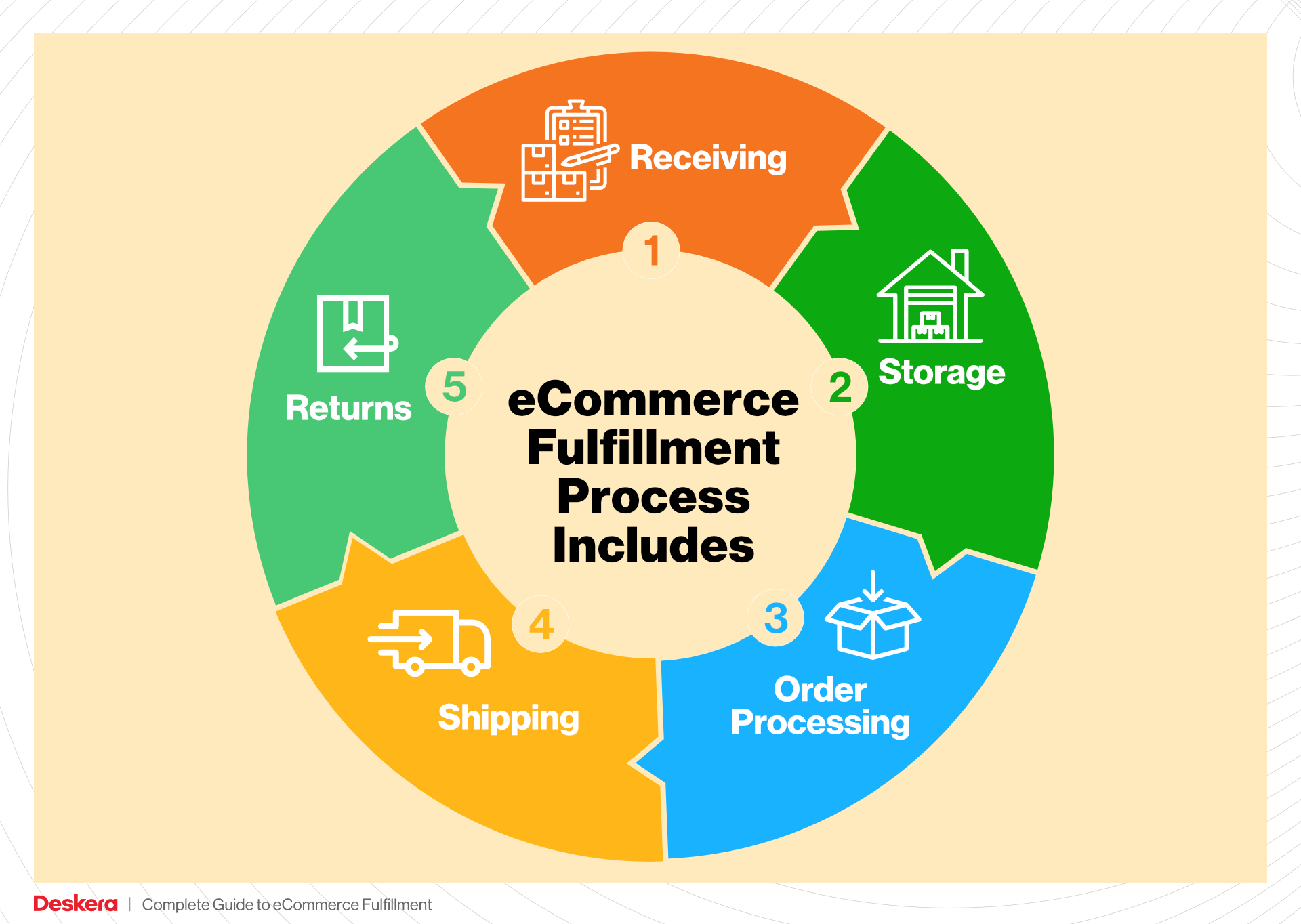
4. Order Packing
After items have been picked, they move to the packing station. Here, products are carefully packed into boxes, ensuring that they are secure and protected during transit. This step often involves selecting appropriate packaging materials, such as bubble wrap, packing peanuts, or custom boxes, to prevent damage.
Order packing is essential not only for protecting products but also for optimizing shipping costs. Properly packed items can reduce dimensional weight charges and improve space utilization in shipping vehicles. Important terms in this stage include “pack slips” and “dimensional weight,” which refer to the documentation included with orders and the calculation of shipping costs based on package size, respectively.
5. Shipping & Delivery
The final step in the order fulfillment process is shipping and delivery. Once orders are packed, they are labeled and prepared for dispatch. This includes selecting the best shipping method based on factors such as cost, speed, and destination. Fulfillment centers often partner with multiple carriers, allowing for flexibility and optimization of shipping costs.
Shipping and delivery are crucial for customer satisfaction, as they determine how quickly a customer receives their order. In today’s competitive e-commerce landscape, fast and reliable delivery options are a key differentiator for businesses. Terms like “last-mile delivery” and “tracking number” are critical here, as they refer to the final leg of the delivery journey and the unique identifier that allows customers to track their packages in real time.
By understanding and optimizing each of these steps in the order fulfillment process, e-commerce businesses can enhance their operational efficiency, improve customer satisfaction, and ultimately scale their logistics successfully.
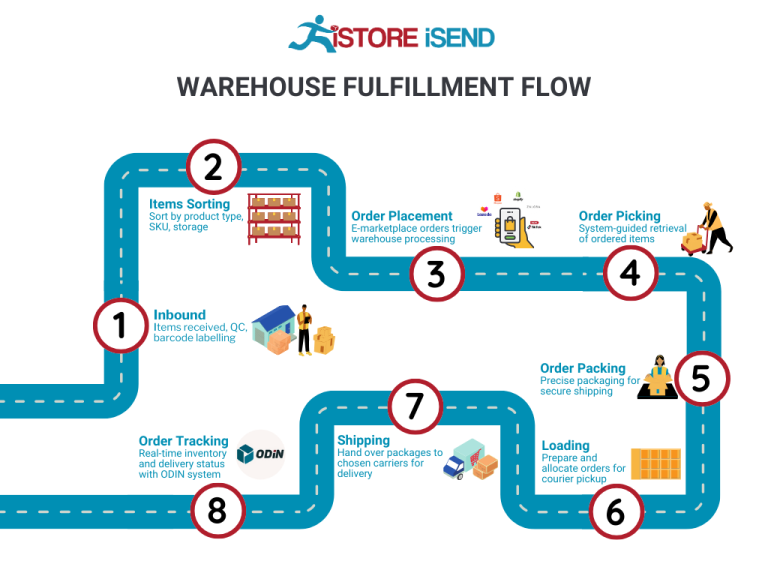
Comparing Fulfillment Models: In-House vs. 3PL vs. Dropshipping
Fulfillment Model Comparison
| Model | Who Handles Inventory | Best For (Business Stage) | Key Advantage | Key Disadvantage |
|---|---|---|---|---|
| In-House Fulfillment | The business itself | Established businesses | Full control over inventory | High overhead and operational costs |
| Third-Party Logistics (3PL) | 3PL provider | Growing businesses | Scalability and expertise | Less control over inventory |
| Dropshipping | Supplier | Startups and small businesses | Low startup costs | Lower profit margins |
In-House Fulfillment
In-house fulfillment is a model where the e-commerce business manages its own inventory, order processing, and shipping directly from its own facilities. This approach provides the business with complete control over its inventory management, allowing for tailored warehousing solutions and personalized customer service. For established businesses with sufficient capital and resources, in-house fulfillment can enhance operational efficiency, ensuring that products are stored, packed, and shipped according to the company’s specific standards and timelines. However, this model comes with significant overhead costs, including warehousing, staffing, and technology investments, which can strain financial resources, particularly for smaller businesses. Additionally, it requires a robust logistics strategy and continuous management to keep up with order volumes and customer expectations.
Third-Party Logistics (3PL)
Third-party logistics (3PL) is a fulfillment model where a business outsources its logistics operations to an external service provider. The 3PL handles various aspects of the supply chain, including warehousing, inventory management, order fulfillment, and shipping. This model is particularly advantageous for growing businesses looking to scale without the burden of managing logistics in-house. By partnering with a 3PL, businesses gain access to expert knowledge, advanced technology, and scalable solutions that can adapt to fluctuating order volumes. This allows entrepreneurs to focus on core business activities, such as marketing and product development. However, the trade-off is a potential loss of control over inventory management and customer service, as the 3PL becomes the intermediary in the fulfillment process. Businesses must also carefully select their 3PL partner to ensure alignment with their operational goals and customer service standards.
Dropshipping
Dropshipping is a fulfillment model where the retailer does not hold inventory but instead transfers customer orders and shipment details directly to a supplier, who then ships the products directly to the customer. This model is particularly attractive for startups and small businesses due to its low barrier to entry and minimal upfront costs. Entrepreneurs can create an online store without the need to invest in inventory or manage logistics, allowing for a focus on marketing and customer acquisition. However, dropshipping comes with its own set of challenges, including lower profit margins due to reliance on suppliers and potential issues with inventory availability and shipping times. Additionally, businesses have limited control over product quality and customer service, which can impact brand reputation. As a result, while dropshipping offers flexibility and reduced financial risk, it requires careful supplier selection and a strong emphasis on customer relationship management to succeed.
In summary, choosing the right fulfillment model depends on various factors, including the stage of the business, financial resources, and desired level of control over the supply chain. Each model has its own set of advantages and disadvantages, making it crucial for business owners to assess their unique needs and long-term goals when deciding on a fulfillment strategy.
A Deep Dive into Amazon FBA: Pros, Cons, and Who It’s For
Understanding Fulfillment by Amazon (FBA)
Fulfillment by Amazon (FBA) is a service provided by Amazon that enables e-commerce businesses to store their products in Amazon’s fulfillment centers. When a customer places an order, Amazon takes care of storage, packaging, shipping, and even customer service on behalf of the seller. This service has revolutionized the way small and large businesses manage logistics and customer fulfillment, allowing them to focus on their core operations.
How FBA Works
-
Inventory Storage: Sellers send their products to Amazon’s fulfillment centers. Each product is logged into Amazon’s inventory system.
-
Order Processing: When a customer places an order for a product that is fulfilled by Amazon, the order is automatically routed to the nearest fulfillment center.
-
Picking and Packing: Amazon employees pick the items from the shelves, pack them, and prepare them for shipment.
-
Shipping: Amazon takes care of shipping the product directly to the customer. This includes handling various shipping options and delivery methods.
-
Customer Service: Amazon also manages customer service and returns for FBA products, providing a seamless experience for both sellers and buyers.
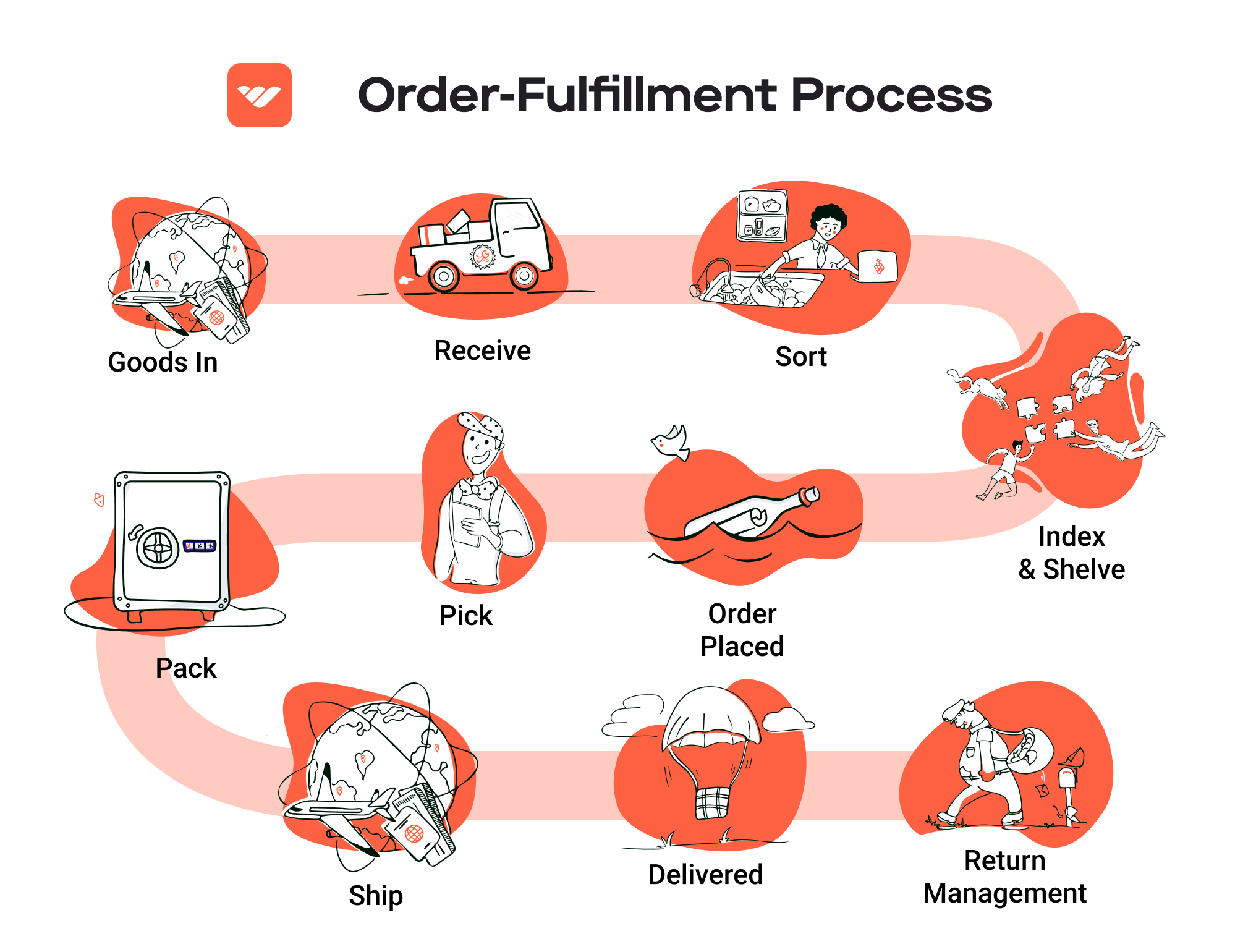
-
Multi-Channel Fulfillment: Beyond Amazon.com, sellers can also use FBA to fulfill orders from their own websites or other sales channels, allowing for a unified logistics strategy.
Pros of Fulfillment by Amazon
1. Prime Eligibility
Products fulfilled by Amazon are eligible for Amazon Prime, which can significantly increase visibility and sales. Prime members often prefer Prime-eligible products due to faster shipping times.
2. Customer Trust
Using FBA can enhance a seller’s credibility. Customers tend to trust Amazon’s logistics and customer service, which can lead to higher conversion rates for products sold through FBA.
3. Streamlined Logistics
FBA handles storage, shipping, and customer service, allowing sellers to focus on product development and marketing rather than logistics. This is particularly beneficial for small businesses and entrepreneurs who may not have the resources to manage their own fulfillment.
4. Multi-Channel Fulfillment
FBA allows sellers to fulfill orders from various sales channels, not just Amazon. This flexibility can help businesses reach a broader audience while maintaining a streamlined fulfillment process.
5. Scalability
As businesses grow, FBA can easily scale with them. Sellers can add more products to their inventory without needing to invest in their own warehousing or logistics systems.
Cons of Fulfillment by Amazon
1. High Fees
FBA comes with various fees, including storage fees for unsold inventory and fulfillment fees for each order. These costs can add up and significantly impact profit margins, especially for low-cost items.
2. Strict Inventory Rules
Amazon has strict inventory management policies. Sellers must monitor their stock levels closely to avoid long-term storage fees for items that do not sell quickly, which can be a challenge for new sellers.
3. Commingling Risks
FBA products may be commingled with inventory from other sellers. This means that if a customer receives a defective item, it may be difficult for the seller to track down the source of the problem. This commingling can also lead to issues with brand integrity and quality control.
4. Loss of Control
By outsourcing fulfillment to Amazon, sellers may lose some control over their customer experience. This includes packaging and handling, which can affect brand perception.
5. Complicated Returns
While Amazon handles returns, the process can sometimes be confusing for sellers. Returned items may not always be in sellable condition, and managing returns effectively requires vigilance.
Who is FBA Best For?
Fulfillment by Amazon is particularly advantageous for:
-
Small to Medium-Sized Businesses: Companies looking to scale their operations without the overhead of managing their own warehousing and logistics.
-
E-commerce Entrepreneurs: Those who want to leverage Amazon’s vast customer base and logistics network while minimizing the complexities of order fulfillment.
-
Brands with High Demand Products: Businesses with products that have proven demand can benefit from the increased visibility and trust that comes with FBA.
-
Sellers with Limited Resources: Entrepreneurs who lack the capital or expertise to manage their own fulfillment operations can greatly benefit from the comprehensive services offered by FBA.
-
Multi-Channel Retailers: Businesses selling on multiple platforms can streamline their logistics and provide consistent service across different sales channels.
In conclusion, while Fulfillment by Amazon offers significant advantages in terms of logistics, customer trust, and scalability, it also comes with challenges such as high fees and strict inventory management rules. Businesses considering FBA should weigh these factors carefully to determine if it aligns with their operational goals and growth strategies.
Core Services Offered by Fulfillment Centers
Inventory Management & Warehousing
Inventory management and warehousing are foundational services provided by fulfillment centers. This involves the systematic tracking and storage of products within a facility, ensuring that items are readily available for order fulfillment. Fulfillment centers utilize advanced inventory management systems that provide real-time data on stock levels, allowing businesses to maintain optimal inventory levels and avoid both stockouts and overstock situations.
Benefits:
1. Increased Efficiency: With organized storage and automated tracking, fulfillment centers can quickly locate items, reducing the time taken to fulfill orders.
2. Cost Savings: By efficiently managing inventory, businesses can reduce storage costs and optimize their supply chain, ultimately leading to increased profit margins.
3. Scalability: As e-commerce businesses grow, fulfillment centers can adjust their warehousing capacity to accommodate increased inventory without requiring significant investment in new infrastructure.
Pick and Pack Services
Pick and pack services are crucial for e-commerce operations, where items are picked from storage, packed for shipment, and prepared for delivery. This process typically involves retrieving ordered products from the warehouse, assembling them into a single shipment, and packaging them securely for transport. Fulfillment centers often leverage technology, such as barcode scanners and automated systems, to enhance accuracy and speed.
Benefits:
1. Speed to Market: Efficient pick and pack processes enable faster order processing, allowing businesses to meet customer expectations for quick delivery.
2. Order Accuracy: Utilizing technology minimizes human error in order fulfillment, ensuring that customers receive the correct products, which enhances customer satisfaction and reduces returns.
3. Customization Options: Many fulfillment centers offer customizable packing options, such as branded packaging or gift wrapping, allowing businesses to enhance their brand image and customer experience.
Kitting and Assembly
Kitting and assembly services involve combining multiple products into a single package or assembling components into a finished product. This service is particularly beneficial for businesses that sell products in bundles or kits, such as beauty sets or DIY assembly items. Fulfillment centers can handle the entire kitting process, from gathering components to packaging them together.
Benefits:
1. Streamlined Processes: By outsourcing kitting and assembly to a fulfillment center, businesses can streamline their operations and focus on core activities such as marketing and sales.
2. Cost-Effective: Outsourcing these processes can be more cost-effective than managing them in-house, as fulfillment centers have the expertise and resources to efficiently handle kitting operations.
3. Enhanced Product Offerings: Kitting allows businesses to create unique product offerings that can attract new customers and increase average order values.
Returns Management (Reverse Logistics)
Returns management, often referred to as reverse logistics, is a critical service offered by fulfillment centers that deals with the handling of returned products. This includes processing returns, inspecting items, restocking them if they are in sellable condition, and managing the disposal of unsellable goods. Effective returns management is essential for maintaining customer satisfaction and ensuring a smooth post-purchase experience.
Benefits:
1. Customer Retention: A streamlined returns process can significantly improve customer satisfaction, encouraging repeat purchases and fostering brand loyalty.
2. Operational Efficiency: Fulfillment centers can efficiently manage returns, ensuring that they are processed quickly and accurately, thus minimizing the impact on inventory and cash flow.
3. Data Insights: Analyzing returns data can provide valuable insights into product performance and customer preferences, allowing businesses to make informed decisions about inventory and product offerings.
In conclusion, partnering with a fulfillment center in Charlotte or any other location can provide e-commerce businesses with essential services that enhance operational efficiency, reduce costs, and improve customer satisfaction. By leveraging the core services of inventory management, pick and pack, kitting and assembly, and returns management, businesses can scale their operations effectively while focusing on growth and customer engagement.
How to Choose a Fulfillment Partner: A 6-Point Checklist
Location & Warehouse Network
Choosing a fulfillment partner starts with understanding their location and warehouse network. The geographical proximity of fulfillment centers to your target customers can significantly influence shipping speed and costs.
-
Why It Matters: A fulfillment center closer to your customers can reduce shipping times, which is crucial for maintaining customer satisfaction. Additionally, it can help minimize shipping costs, especially for larger items or bulk orders.
-
Questions to Ask:
- Where are your fulfillment centers located, and how does that align with my customer base?
- What is your average shipping time to my primary markets?
- Can you provide insights into your last-mile delivery capabilities?
Technology & Integrations
In today’s e-commerce landscape, technology is a key differentiator among fulfillment partners. A robust technology stack can enhance order accuracy, inventory management, and overall operational efficiency.
-
Why It Matters: Integration with your existing e-commerce platforms (like Shopify, WooCommerce, or Amazon) is essential for seamless order processing. Advanced tracking systems can provide real-time updates for you and your customers.
-
Questions to Ask:
- What technology do you use for order management and inventory tracking?
- Can your systems integrate with my e-commerce platform, and what is the process for setup?
- Do you offer any tools for real-time tracking and reporting?
Specializations (e.g., Cold Storage, Oversized Items)
Different businesses have unique needs when it comes to product storage and handling. Depending on your product line, you may require a partner with specialized capabilities.
-
Why It Matters: If you sell perishable goods, electronics, or oversized items, your fulfillment partner must have the appropriate facilities and processes to handle these products safely and efficiently.
-
Questions to Ask:
- Do you have specialized storage facilities (e.g., climate-controlled or oversized item storage)?
- What are your handling procedures for delicate or high-value items?
- Can you accommodate seasonal fluctuations in inventory levels?
Scalability & Capacity
As your business grows, so will your fulfillment needs. It’s essential to partner with a fulfillment provider that can scale operations in line with your growth trajectory.
-
Why It Matters: A partner that can accommodate increased order volumes without sacrificing service quality will help you capitalize on growth opportunities while maintaining customer satisfaction.
-
Questions to Ask:
- What is your current capacity, and how have you handled spikes in demand in the past?
- Can you provide references from companies that have scaled with you?
- What steps do you take to ensure that you can meet my growing demands?
Pricing and Contracts
Understanding the pricing structure of your fulfillment partner is critical to maintaining your margins. Transparent pricing can help you avoid unexpected costs and budget effectively.
-
Why It Matters: Different partners may offer various pricing models (e.g., per order, per item, or storage fees). Knowing how these costs will impact your bottom line is crucial for financial planning.
-
Questions to Ask:
- What is included in your pricing structure, and are there any hidden fees I should be aware of?
- How do you handle pricing for returns or damaged items?
- What are the terms of your contracts, and is there flexibility for short-term commitments?
Customer Support & Reviews
The level of customer support offered by your fulfillment partner can significantly impact your operations. Excellent support can help resolve issues quickly and maintain a smooth workflow.
-
Why It Matters: In e-commerce, timely communication is vital for addressing any operational hiccups. A responsive support team can be the difference between a satisfied customer and a lost sale.
-
Questions to Ask:
- What support channels do you offer (e.g., phone, email, chat), and what are your hours of operation?
- Can you provide case studies or testimonials from current clients about your support service?
- How do you handle service disruptions or errors in order fulfillment?
Conclusion
Choosing the right fulfillment partner is a critical decision that can significantly influence your e-commerce business’s success. By focusing on these six key areas—Location & Warehouse Network, Technology & Integrations, Specializations, Scalability & Capacity, Pricing and Contracts, and Customer Support & Reviews—you can make an informed choice that aligns with your business goals and customer expectations. Take the time to ask these questions and evaluate potential partners carefully, ensuring that they can support your growth and operational needs effectively.
Understanding Fulfillment Pricing: A Breakdown of Common Fees
Initial Setup Fees
Initial setup fees are one-time charges that e-commerce businesses incur when they begin using a fulfillment service. These fees can cover a variety of administrative and technical aspects, such as account setup, integration with existing e-commerce platforms, and the establishment of inventory management systems.
The calculation of setup fees can vary widely depending on the complexity of the services required. For instance, a straightforward setup for a small seller might cost a few hundred dollars, while larger operations needing custom integrations or specialized services could face fees in the thousands. It’s essential to clarify what is included in the setup fee to avoid unexpected costs.
Receiving Fees
Receiving fees are charged when your products arrive at the fulfillment center. This fee covers the labor and resources required to unload, inspect, and store your inventory. The calculation typically involves a per-unit or per-pallet fee, depending on the volume of goods being received.
For example, if your shipment includes 100 pallets, and the receiving fee is $20 per pallet, you would incur a total of $2,000 in receiving fees. Some fulfillment centers may also charge additional fees for any damaged or non-compliant products, so it’s crucial to ensure that shipments meet the center’s specifications to minimize these costs.
Storage Fees (per pallet/bin)
Storage fees are charged for the space your inventory occupies within the fulfillment center. These fees are typically calculated on a monthly basis and can be charged per pallet, bin, or cubic foot, depending on the fulfillment provider’s pricing structure.
For instance, if your products take up 10 pallets and the storage fee is $25 per pallet per month, your monthly storage cost would amount to $250. Be aware that many fulfillment centers have different rates for standard and long-term storage. Long-term storage fees can be significantly higher, so it’s wise to keep an eye on inventory turnover to avoid unnecessary charges.
Pick & Pack Fees (per item/order)
Pick and pack fees are charged for the process of retrieving items from storage and packaging them for shipment. This fee is generally assessed per item or per order, depending on the fulfillment center’s pricing model.
For example, if a fulfillment center charges $2 per item for picking and packing, and your order contains 5 items, the total pick and pack fee would be $10. Some fulfillment centers may also offer tiered pricing, where the cost decreases with higher order volumes. Understanding how these fees are structured can help businesses optimize their order fulfillment processes and minimize costs.
Shipping Fees
Shipping fees are one of the most significant expenses for businesses using fulfillment services. These fees cover the cost of transporting goods from the fulfillment center to the end customer. Shipping fees can vary based on several factors, including the destination, package weight, dimensions, and shipping speed.
Most fulfillment centers will calculate shipping fees based on real-time carrier rates, which can fluctuate based on market conditions. Additionally, businesses may have the option to negotiate shipping rates with carriers to secure better pricing. It’s advisable to explore multiple shipping options and consider factors like delivery speed and cost-effectiveness to choose the best solution for your business.
Tips for Getting an Accurate Quote
-
Understand Your Needs: Before requesting a quote, have a clear understanding of your business model, average order size, inventory turnover rate, and specific fulfillment requirements.
-
Provide Detailed Information: When contacting fulfillment centers for quotes, provide as much detail as possible about your products, expected order volumes, and shipping needs. This will help them give you a more accurate estimate.
-
Compare Multiple Providers: Don’t settle for the first quote you receive. Compare pricing and services from several fulfillment centers to ensure you’re getting the best value.
-
Ask About Hidden Fees: Inquire about any potential hidden fees, such as those for returns, special handling, or storage beyond the standard terms. Understanding the full scope of costs will help you make an informed decision.
-
Review Contracts Carefully: Before signing any agreements, carefully review the terms and conditions, particularly regarding fees and pricing structures. This will help you avoid unexpected costs in the future.
By understanding these common fulfillment pricing models and following these tips, e-commerce business owners can make more informed decisions that support their growth and profitability.
Frequently Asked Questions (FAQs) about Fulfillment
1. What is an Amazon Fulfillment Center in Charlotte?
An Amazon Fulfillment Center in Charlotte is a large-scale facility that specializes in storing, packing, and shipping products for Amazon. These centers play a critical role in the supply chain, allowing for efficient processing of customer orders and timely deliveries.
2. How does an Amazon Fulfillment Center operate?
Fulfillment centers operate by receiving products from suppliers, storing them in organized inventory systems, and processing customer orders. When an order is placed, the center picks, packs, and ships the items directly to the customer, leveraging advanced technology and automation to optimize speed and accuracy.
3. What types of products are stored at the Charlotte fulfillment centers?
The Charlotte fulfillment centers handle a wide variety of products, including large items like mattresses, kayaks, and exercise equipment. These facilities are designed to accommodate both small and bulky goods, ensuring a diverse inventory that meets customer needs.
4. What is the difference between a warehouse and a fulfillment center?
While both warehouses and fulfillment centers store products, the key difference lies in their functions. A warehouse primarily focuses on storage and inventory management, while a fulfillment center specializes in order processing and shipping, often integrating technology for faster delivery to customers.
5. What is a 3PL (Third-Party Logistics)?
A 3PL, or Third-Party Logistics provider, is a service that allows businesses to outsource their logistics operations, including warehousing, order fulfillment, and shipping. Using a 3PL can help e-commerce businesses scale efficiently without investing in their own logistics infrastructure.
6. How much do fulfillment services cost?
Fulfillment services costs can vary based on several factors, including the volume of orders, the size and weight of products, storage fees, and additional services like packaging and shipping. On average, businesses can expect to pay anywhere from $2 to $10 per order, plus storage fees that range from $0.20 to $2.00 per cubic foot per month.
7. What advantages does the Charlotte fulfillment center offer for e-commerce businesses?
The Charlotte fulfillment center provides several advantages, including proximity to major transport networks, access to a skilled labor force, and the ability to leverage Amazon’s extensive logistics capabilities. This can lead to faster delivery times and reduced shipping costs, enhancing customer satisfaction.
8. How can small businesses benefit from using Amazon’s fulfillment centers?
Small businesses can benefit from Amazon’s fulfillment centers by gaining access to Amazon’s vast logistics network, which can significantly reduce shipping times and costs. Additionally, they can leverage Amazon’s technology and expertise in order management, allowing them to focus on growth and customer engagement.
9. Are there job opportunities at the Amazon fulfillment centers in Charlotte?
Yes, Amazon frequently hires for various positions at its fulfillment centers in Charlotte, ranging from fulfillment associates to management roles. The centers have created thousands of jobs, contributing to the local economy and providing competitive wages and benefits.
10. How does Amazon ensure the efficiency of its fulfillment operations?
Amazon employs a combination of advanced technology, such as robotics and AI, and a well-structured operational workflow to ensure efficiency in its fulfillment centers. Continuous monitoring and data analysis allow for constant optimization of processes, enabling Amazon to meet customer expectations for fast and reliable deliveries.
Conclusion: Is Outsourcing Fulfillment the Right Move for Your Business?
The Strategic Advantage of Outsourcing Fulfillment
Outsourcing fulfillment can be a game-changer for e-commerce businesses seeking to scale efficiently. By leveraging a third-party fulfillment service, businesses can save significant time and resources, allowing them to focus on core activities like marketing, product development, and customer engagement. Fulfillment services streamline the logistics process, handling everything from storage to packing and shipping, thereby minimizing the operational burden on your team.
One of the primary benefits of using a fulfillment partner is scalability. As your business grows, so do your logistics needs. Fulfillment centers, such as those offered by Amazon in Charlotte, provide the infrastructure necessary to accommodate increased order volumes without the need for substantial upfront investment in warehouse space or technology. This flexibility allows businesses to scale operations up or down based on seasonal demand or market changes, ensuring that you are always prepared to meet customer expectations.
Expertise is another critical factor in favor of outsourcing fulfillment. Third-party providers come equipped with specialized knowledge in logistics, inventory management, and shipping best practices. They often utilize advanced technology, such as automation and data analytics, to optimize operations and enhance customer experience. Choosing the right partner means gaining access to these resources, which can significantly improve your supply chain efficiency.
However, not all fulfillment partners are created equal. It’s vital to conduct thorough research and choose a provider that aligns with your business goals and values. Evaluate their track record, service offerings, and technology capabilities to ensure they can support your growth ambitions.
As a strategic next step, consider auditing your current shipping and fulfillment processes. Identify bottlenecks, inefficiencies, and areas for improvement. This assessment will provide clarity on whether partnering with a fulfillment service is the right move for your business, ultimately positioning you for growth in a competitive e-commerce landscape.
Important Disclaimer
⚠️ Important Disclaimer
The information in this guide is for educational purposes. Fulfillment services, pricing, and platform features change frequently. Always conduct your own due diligence and consult with providers directly before making business decisions.
